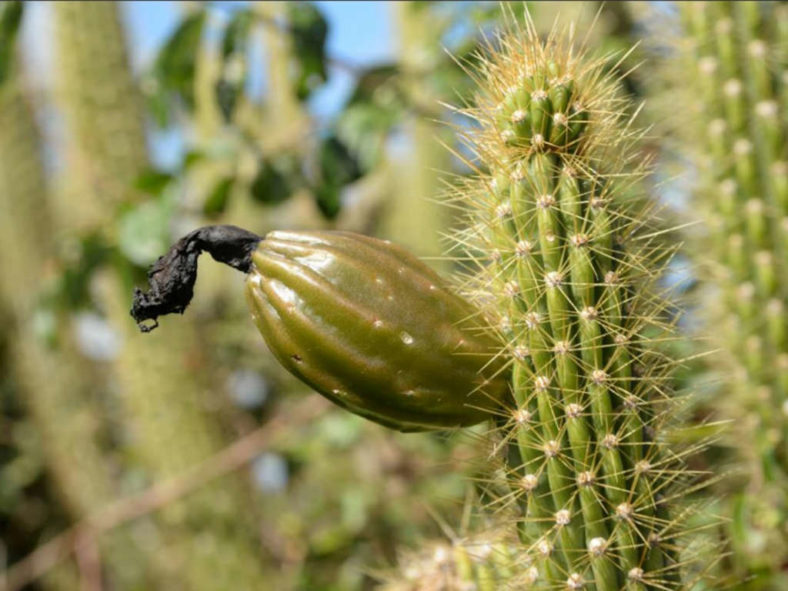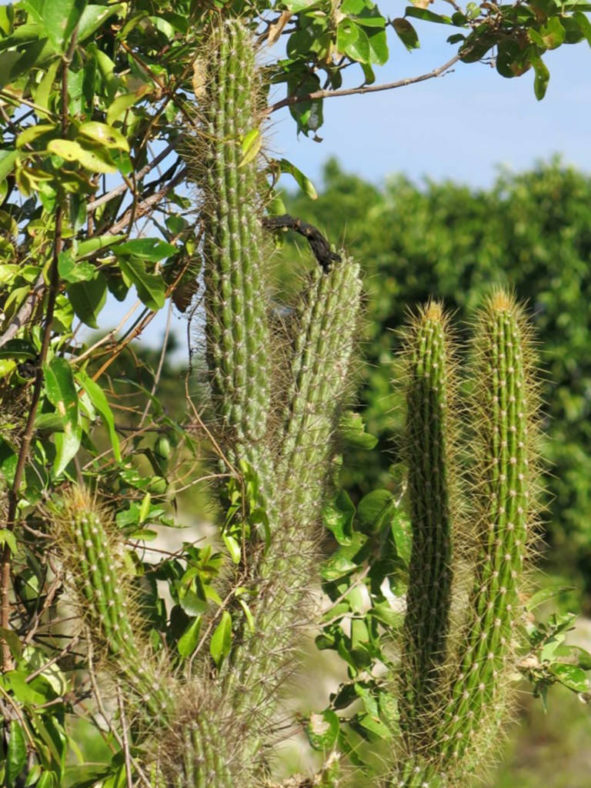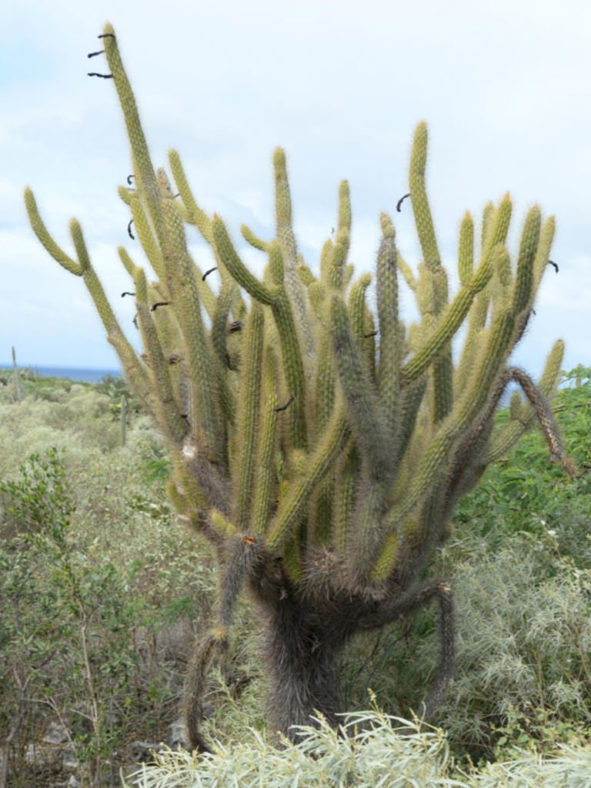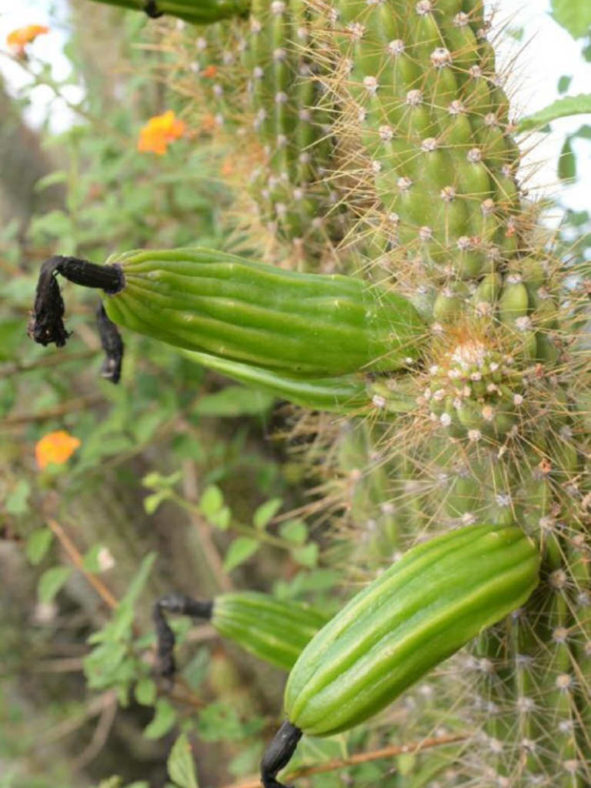Scientific Name
Cereus ayisyen M.H.J.van der Meer
Synonym(s)
Cereus haitiensis
Scientific Classification
Family: Cactaceae
Subfamily: Cactoideae
Tribe: Cereeae
Genus: Cereus
Etymology
The specific epithet "ayisyen (ay-ee-SY-en)" is the Haitian Creole translation of "haitiensis," meaning "Of or from Haiti." C. ayisyen was originally named Cereus haitiensis, but that name is illegitimate as it had already been used for another species.
Origin
Cereus ayisyen is endemic to Haiti.
Description
Cereus ayisyen, formerly known as Cereus haitiensis, is a shrubby cactus with numerous green, mostly erect to ascending branches with 10 to 15 crenate ribs and spines overlapping those of adjacent areoles. It can grow up to 13.1 feet (4 m) tall. The trunk is scarcely evident or up to 3.3 feet (1 m) tall and can reach up to 8 inches (20 cm) in diameter. The branches can grow up to 1.8 inches (4.5 cm) in diameter. The spines are straw-colored and can grow up to 1.4 inches (3.5 cm) long.
The flowers can reach up to 2.8 inches (7 cm) long and up to 2.6 inches (6.5 cm) in diameter. The fruits are green to yellow, smooth, obscurely ribbed, and can grow up to 4.4 inches (11 cm) long and 2.4 inches (6 cm) in diameter. The seeds are brown when immature and black when mature.

How to Grow and Care for Cereus ayisyen
Light: This cactus likes full sun. It can handle partial shade but thrives in direct sunlight during the summer. A sunny window is a good spot to grow C. ayisyen indoors. Rotate the pot a quarter turn every week or two to encourage balanced growth. If possible, get your cactus outdoors from spring to fall.
Soil: C. ayisyen does not like "wet feet" and needs to be grown in well-draining soil. Use commercial soil mixes for cacti or make your own mix.
Hardiness: During the active growth period, this cactus likes warm temperatures, while in winter, it likes cooler temperatures. C. ayisyen can withstand temperatures as low as 25 to 50 °F (-3.9 to 10 °C), USDA hardiness zones 9b to 11b.
Watering: From spring to fall, water thoroughly, but allow the soil to dry out before watering again. With the arrival of fall, gradually reduce the watering frequency. When C. ayisyen is dormant in winter, give it just enough water to prevent shrinking.
Fertilizing: During its growing season, this cactus likes regular fertilizing. A balanced, water-soluble fertilizer, diluted to 1/4 strength, can be added to each watering. A 10-10-10 fertilizer is ideal. Instead of making a solution of water and fertilizer, there are also dry fertilizers. Do not fertilize during the winter.
Repotting: While C. ayisyen is young, it is recommended to repot each year in early spring. Once it matures, repot when your cactus is outgrowing its pot.
Propagation: Using stem cuttings is the easiest method to propagate C. ayisyen because seed propagation is a slow process. Planting of the cuttings is best done when the cactus is actively growing. Spring and summer are the best time to sow the seeds.
Learn more at How to Grow and Care for Cereus.
Toxicity of Cereus ayisyen
C. ayisyen is non-toxic to humans or animals.
Links
- Back to genus Cereus
- Succupedia: Browse succulents by Scientific Name, Common Name, Genus, Family, USDA Hardiness Zone, Origin, or cacti by Genus
Photo Gallery
Click on a photo to see a larger version.


